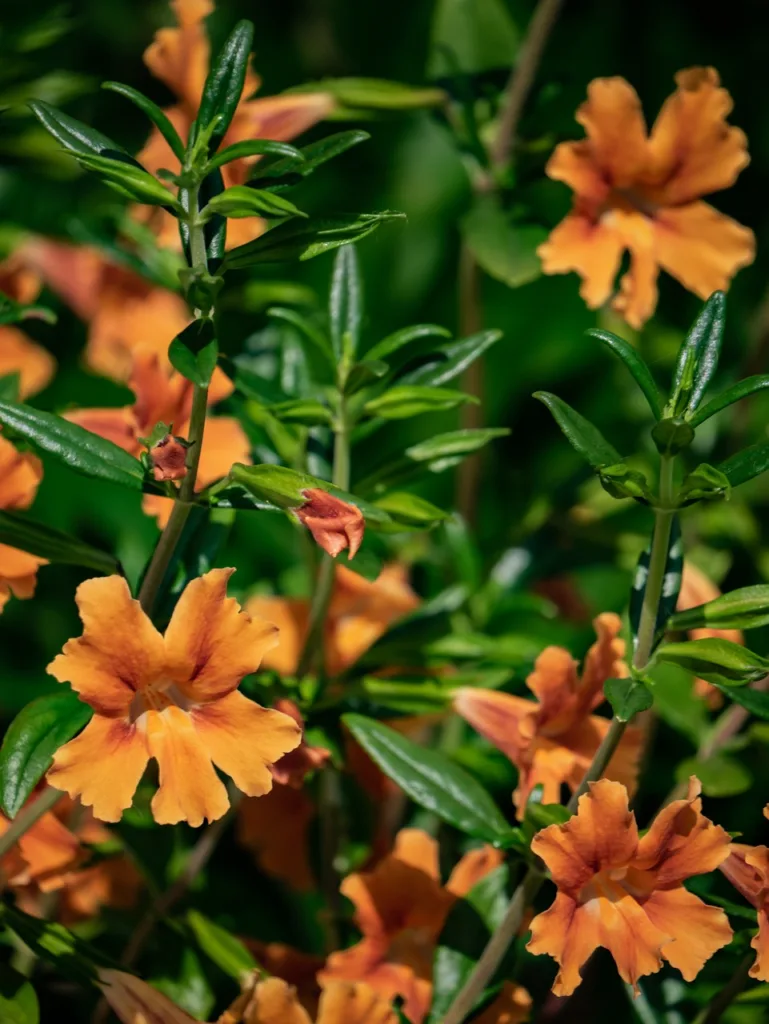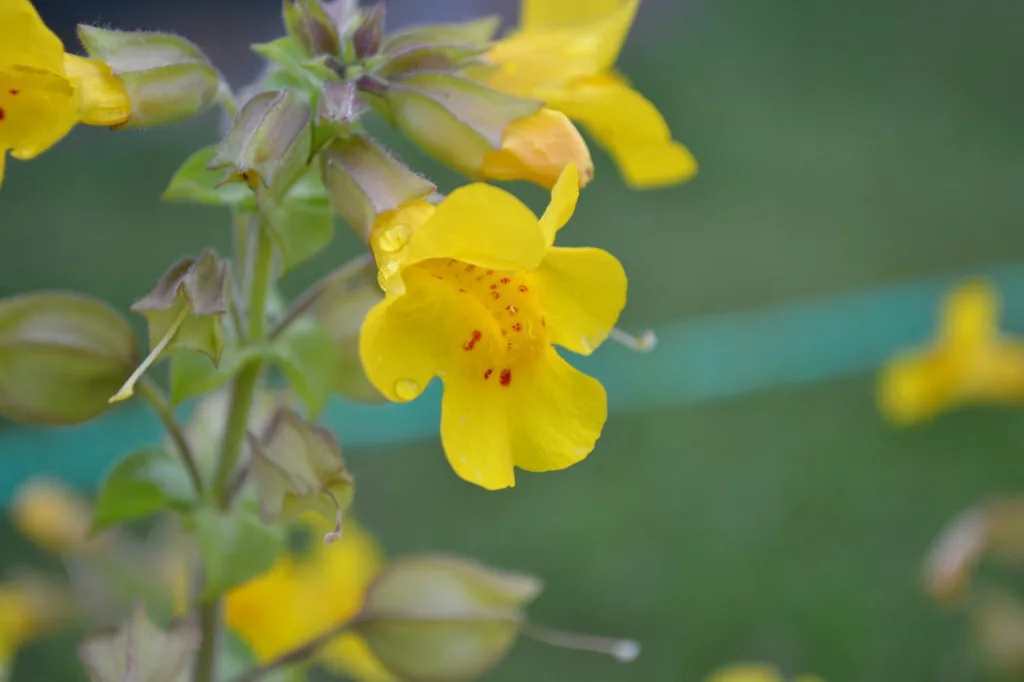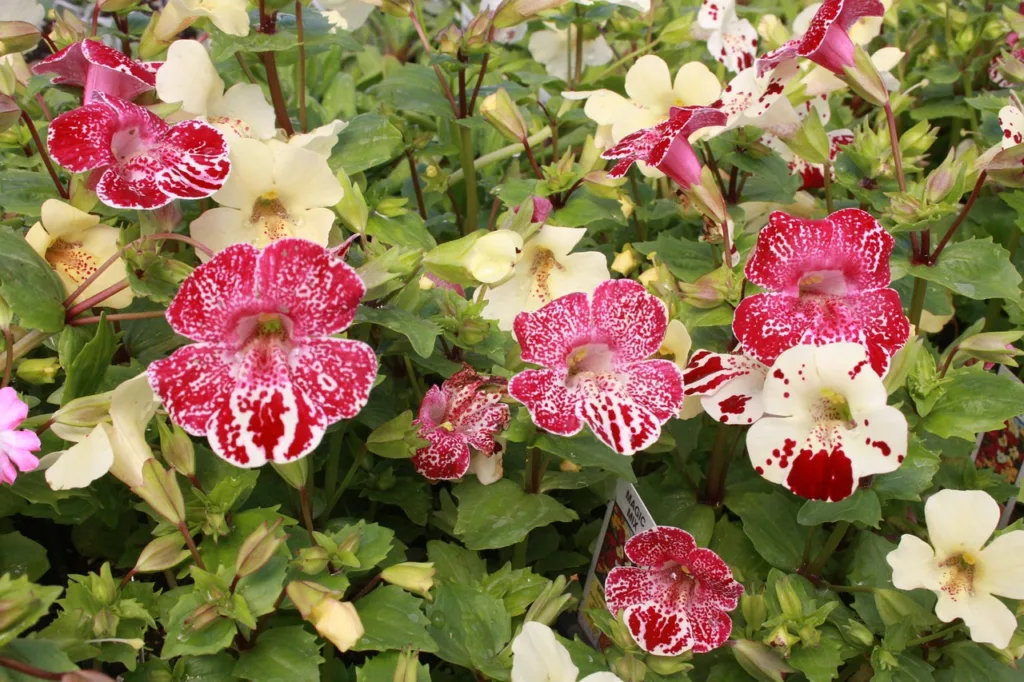Monkey flowers, scientifically known as Mimulus, are vibrant and charismatic plants that add a splash of color to any garden or indoor space. With their unique shape and vibrant hues ranging from deep red to bright yellow, these flowers are sure to catch the eye of both experienced gardeners and beginners alike.
In this blog post, we will explore the various how to care for and grow monkey flowers, providing you with all the information you need to successfully cultivate these beautiful plants.
Finding the Perfect Spot for Your Monkey Flowers
One of the first steps to successfully growing monkey flowers is finding the perfect spot for them to thrive. These plants prefer partial shade to full sun, so it’s important to choose a location that receives a few hours of direct sunlight each day.
Additionally, monkey flowers prefer moist soil, so consider planting them near a water source or in an area that retains moisture.
Preparing the Soil for Planting
Before planting your monkey flowers, it’s essential to prepare the soil properly. Monkey flowers thrive in well-drained soil that is rich in organic matter. Adding compost or well-rotted manure to the soil will help improve its fertility, ensuring your plants have access to the nutrients they need to grow and bloom.
It’s also important to loosen the soil to a depth of at least 6 inches to allow for proper root development.
Planting Monkey Flowers
Once you’ve chosen the perfect spot and prepared the soil, it’s time to plant your monkey flowers. Start by digging a hole that is deep enough to accommodate the root ball of the plant.
Carefully place the plant in the hole, ensuring that the top of the root ball is level with the soil surface. Gently backfill the hole with soil, firming it around the plant to eliminate any air pockets.
| Feature | Description |
|---|---|
| Scientific Name | Mimulus |
| Common Name | Monkey Flower |
| Family | Phrymaceae |
| Origin | Primarily found in North and South America |
| Blooms | Spring through summer |
| Colors | Range from yellow to red, orange, pink, and white |
| Growing Zones | Various zones depending on species, commonly 4-9 |
| Habit | Herbaceous perennial |
Types of Monkey Flowers
There are numerous species and hybrids of Monkey Flowers (Mimulus) available, each with unique characteristics. Some common types include:
- Mimulus guttatus: Known for its yellow flowers with red or orange spots.
- Mimulus lewisii: Often found with tubular flowers in shades of pink to purple.
- Mimulus cardinalis: Recognizable by its red flowers and preference for moist soil.
- Mimulus luteus: Exhibits yellow flowers and a propensity for damp, boggy areas.

Watering and Maintenance
Consistent watering is crucial for the health and vitality of monkey flowers. These plants prefer evenly moist soil, so it’s important to water them regularly, especially during dry spells or hot summer months.
Aim to keep the soil consistently damp but not waterlogged, as excessive moisture can lead to root rot. A layer of mulch around the base of the plant can help retain moisture and prevent weed growth.
In addition to regular watering, monkey flowers will benefit from regular feeding during the growing season. Apply a balanced, slow-release fertilizer according to the package instructions every four to six weeks. This will provide the necessary nutrients for healthy growth and vibrant blooms.
Pruning and Deadheading
To promote bushier growth and prolong blooming, it’s important to prune your monkey flowers regularly. Prune back any dead or damaged stems throughout the growing season, using sharp, clean pruning shears.
Additionally, removing faded flowers, a process known as deadheading will encourage the plant to continue producing new blooms. Simply pinch off the spent flowers at their base to stimulate new growth.
Dealing with Pests and Diseases
While monkey flowers are generally resistant to pests and diseases, they can occasionally be affected by common garden nuisances. Aphids and spider mites can sometimes infest these plants, causing damage to the leaves and stunting growth.
Keeping the plants well-watered and regularly inspecting for signs of infestation can help prevent these issues. If pests are present, you can control them with organic insecticidal sprays or by introducing beneficial insects, such as ladybugs, to your garden.
Overwintering Monkey Flowers
In regions with cold winters, monkey flowers are typically grown as annuals. However, with adequate protection, it’s possible to overwinter these plants and enjoy their beauty for multiple seasons. Before the first frost, cut back the stems of the plant to a few inches above the soil line.
Covering the plant with a layer of mulch or straw can help insulate it from cold temperatures. Providing additional protection, such as a portable greenhouse or a cold frame, can further enhance its chances of survival.
Flowers that look like monkeys
The term “monkeyflower” generally refers to a group of flowers in the Mimulus genus. These flowers got their name because of their resemblance to the face of a monkey.
The unique shape of some Mimulus flowers, particularly the Mimulus tigrinus variety, has spots and patterns that, when viewed from a certain angle, can resemble a monkey’s face. This association inspired the common name “monkeyflower”.

Conclusion
Caring for and growing monkey flowers can be a rewarding experience, whether you’re an experienced gardener or just starting your gardening journey. By finding the perfect spot for your plants, preparing the soil, and providing adequate water and nutrients, you can ensure their health and vitality.
Regular pruning and deadheading, along with pest and disease control, will help maintain their beauty throughout the growing season. And with proper protection and care, you can even overwinter your monkey flowers, enjoying their vibrant blooms for years to come.
Now that you have all the information you need to care for and grow monkey flowers, it’s time to get started! Head to your local nursery or garden center, select your favorite varieties and watch as these charming plants transform your garden into a colorful oasis. Happy gardening!
People also ask
- Why is it called a monkey flower?
Monkey flowers are so named due to the resemblance of some of their blossoms, particularly those in the Mimulus tigrinus variety, which, when viewed from certain angles, may appear to resemble a monkey’s face due to their spots and patterns. - Are monkey flowers real?
Yes, monkey flowers are real. They belong to the genus Mimulus and are known for their unique, colorful, and sometimes monkey-face-like blooms. - What is the real name of the monkey flower?
The scientific name of the monkey flower is Mimulus. There are various species and cultivars within the Mimulus genus, and they are commonly referred to as monkey flowers. - Is monkey flower edible?
Some species of Mimulus (monkey flower) are considered edible, but it’s crucial to be certain about the specific variety and its safety for consumption. As with any plant intended for consumption, it’s recommended to ensure you have positively identified the species and understand whether it is safe for human consumption before ingesting any part of the plant.

